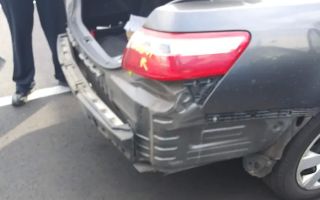Understanding Car Engine Failure Codes and How to Solve Them
Have you ever been driving along the road, enjoying the ride, when suddenly your car’s check engine light pops up? It can be one of the most stressful moments a driver can face. What does it mean? What should you do next? This is where understanding car engine failure codes becomes crucial. As someone who has had to troubleshoot a few car problems over the years, I’ve come to appreciate the importance of these codes in diagnosing engine issues. Whether you're a seasoned mechanic or a first-time car owner, understanding these codes can save you both time and money.

Walter's Auto Repair
5508 Atlantic Ave, Long Beach, CA 90805, USA
The Basics of Car Engine Failure Codes
Car engine failure codes, also known as Diagnostic Trouble Codes (DTCs), are generated by the car's On-Board Diagnostics (OBD) system. This system monitors various components of your engine and other essential vehicle systems. When something goes wrong, the OBD system logs a specific code, which can be read using an OBD-II scanner. These codes help technicians and car owners alike pinpoint the issue, whether it’s a simple sensor malfunction or a more complex engine failure.

Nava Auto Repair
38950 30th St E C, Palmdale, CA 93550, USA
How Do Engine Failure Codes Work?
When a failure occurs, your car’s computer system records a code that corresponds to the issue at hand. These codes consist of a series of numbers and letters. For example, you might encounter a code like “P0301.” The “P” stands for a powertrain issue, the first digit “0” indicates that it’s a standard code (not manufacturer-specific), the “3” refers to a misfire, and the “01” points to the misfire occurring in cylinder 1.
The code itself doesn’t always describe the exact problem in detail; it’s more like a clue. For instance, if your car is displaying a “P0420” code, it could indicate an issue with the catalytic converter. But it might also mean that the oxygen sensors are faulty or that there’s an exhaust leak. The code narrows down the possible problems, but you still have to investigate further.
Common Engine Failure Codes and What They Mean
Over the years, I’ve come across several common engine failure codes that many drivers face. Below are a few examples that may pop up when you plug in an OBD-II scanner:
1. P0300 – Random/Multiple Cylinder Misfire
A “P0300” error code indicates that there’s a misfire happening in more than one cylinder. Misfires can occur due to faulty spark plugs, bad fuel injectors, or a weak ignition coil. This is one of those codes that often leads to performance issues like rough idling, reduced power, or poor fuel economy. If you get this code, check the spark plugs and ignition coils first. If everything seems fine, you may need to look into the fuel system or even compression issues.
2. P0171 – System Too Lean (Bank 1)
The “P0171” code indicates that your car’s air-fuel mixture is too lean, meaning there’s too much air and not enough fuel in the combustion process. This could be caused by a dirty air filter, vacuum leaks, or issues with the fuel injectors. If you get this code, a simple fix might be cleaning or replacing the air filter. However, if the problem persists, you may need to have your fuel injectors cleaned or checked for leaks.
3. P0420 – Catalyst Efficiency Below Threshold (Bank 1)
The “P0420” code points to the catalytic converter being inefficient. This is a serious issue since the catalytic converter plays a key role in reducing emissions. While this could mean a worn-out catalytic converter, it could also indicate a problem with the oxygen sensors or even a simple exhaust leak. It’s important to address this quickly because ignoring the issue could lead to further damage or even a failed emissions test.
How to Diagnose and Fix Engine Failure Codes
When you get an engine failure code, it’s essential to understand the best steps to take next. Here’s a simple guide I’ve followed over the years:
Step 1: Use an OBD-II Scanner
The first step in diagnosing any engine problem is to use an OBD-II scanner. These devices are relatively inexpensive and easy to use. Plug it into the OBD-II port in your vehicle, usually located under the dashboard near the driver’s side. Once the scanner is connected, it will display any stored codes in the system. From here, you can look up the codes online or in a repair manual to understand what’s going wrong.
Step 2: Interpret the Codes
Once you have the codes, it’s time to interpret them. As I mentioned before, these codes often point to specific components or systems in your car. However, you’ll need to do a bit more investigation to pinpoint the exact cause. Don’t be discouraged if the code doesn’t immediately make sense—sometimes it’s a matter of looking at related components and eliminating possibilities. In my experience, being methodical and patient is key when dealing with these codes.
Step 3: Perform a Visual Inspection
Before rushing to a repair shop, it’s always a good idea to inspect the components related to the error code. For example, if you’ve got a misfire code, check the spark plugs and wires for wear. If there’s a “lean” fuel code, check for any vacuum leaks or problems with the air intake. In many cases, a simple fix like replacing a spark plug or tightening a hose can solve the problem without needing professional help.
Step 4: Consult a Mechanic
If you’re unable to resolve the issue on your own or if the error code suggests a more serious problem, it might be time to consult a mechanic. Professional mechanics can use more advanced diagnostic tools to help identify the root cause of the issue and perform repairs that require more expertise. It’s always good to keep a trusted mechanic in your corner for these situations!
The Importance of Regular Maintenance
One thing I’ve learned through all my experiences with car engine codes is the importance of regular vehicle maintenance. Keeping up with your car’s scheduled service, such as oil changes, spark plug replacements, and air filter checks, can prevent many issues from happening in the first place. Preventative care is always cheaper than costly repairs down the road. So, don’t wait for that check engine light to come on before taking action—stay proactive!
Conclusion
Understanding and interpreting engine failure codes can feel overwhelming, but once you get the hang of it, it’s a powerful tool to have in your vehicle maintenance toolkit. Whether you’re a DIY mechanic or simply want to be more informed when something goes wrong, knowing how to read these codes will give you more control over your car’s health. So, the next time that check engine light turns on, don’t panic—grab an OBD-II scanner, get those codes, and get to work fixing the problem!





























